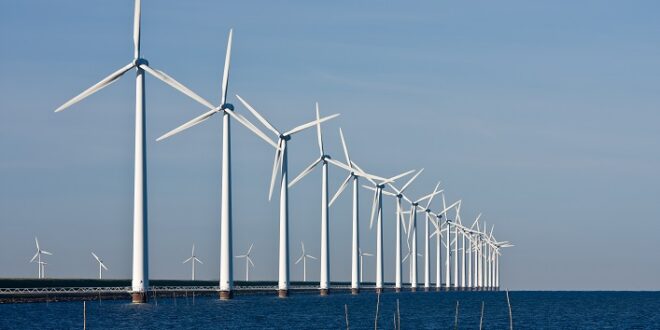Europe has intensified efforts this year to protect its clean energy manufacturing industries and reduce dependence on China for its renewable energy rollout.
Several proposed EU acts are aimed at boosting Europe’s competitiveness in the global clean energy supply chain and minimize risks to energy infrastructure security.
Europe’s wind industry, which accounts for around 16% of the EU’s electricity consumption, has been struggling in the past two years amid slow permitting processes, supply chain disruptions, rising costs and interest rates, and increased pressure from international competitors, especially China.
Security risks have also increased in Europe’s offshore energy infrastructure, following the damage to the Balticconnector pipeline between Estonia and Finland in the Baltic Sea in early October. A Chinese ship was implicated in the incident, with the Finnish National Bureau of Investigation (NBI) saying it believes the damage was caused by “an external force” that was “mechanical, not an explosion” and later revealed that a large anchor – believed to belong to the 169-meter-long ship – was found near the pipeline and likely broke off as it was dragged across the sea floor.
“These incidents are alarming because the west is so dependent on this maritime infrastructure: pipelines to deliver our oil and gas supplies, undersea cables carrying the data for our modern digital economies, and offshore wind to power the energy transition,” Elisabeth Braw, a senior associate fellow at the European Leadership Network, writes in the Financial Times.
Wind power operators need to step up monitoring of their offshore infrastructure, Braw says, noting that Europe also needs to encourage domestic clean energy manufacturing to reduce dependence on Chinese components.
Over the past year, the EU has been looking to keep domestic manufacturing in the green energy supply chain but is currently failing as low-cost Chinese products and the U.S. Inflation Reduction Act could take away Europe’s competitiveness.
The WindEurope association, for example, said in September that unless the EU changes its policies, it could lose European manufacturing.
“And the struggles of the European wind supply chain mean Chinese turbine manufacturers are now starting to win orders here. They offer cheaper turbines, looser standards and unconventional financial terms,” WindEurope said.
“There is a very real risk that the expansion of wind energy will be made in China, not in Europe.”
China also plays an outsized role in the global supply chain of clean energy technology, which presents another set of energy security concerns due to the highly geographically concentrated supply chains for both technology and critical minerals, as the International Energy Agency (IEA) acknowledges.
According to the agency’s forecast in the World Energy Outlook, China will have a 79% share of the solar PV supply chain in 2030, 64% in wind power, 68% in batteries, 54% in lithium chemicals, and 72% in refined cobalt.
In a bid to keep Europe competitive, the European Commission unveiled last month the so-called European Wind Power Action Plan, “to ensure that the clean energy transition goes hand-in-hand with industrial competitiveness and that wind power continues to be a European success story.”
Kadri Simson, European Commissioner for Energy, said “In the space of two years, Europe has lost its leadership as the largest world market for wind to the Asia Pacific region. Now this trend starts to be visible in the EU as well.”
“This happens as the pressure from international competitors is growing. These players can leverage the advantage of operating in larger domestic markets and benefiting from various forms of government support,” Simson added.
This week, the European Parliament backed plans to boost Europe’s net-zero technology production. The proposed Net-Zero Industry Act sets a target for Europe to produce 40% of its annual deployment needs in net-zero technologies by 2030, and to capture 25% of the global market value for these technologies.
The Parliament and the EU Council now have to launch talks on the final shape of the new law.

 Iran Energy News Oil, Gas, Petrochemical and Energy Field Specialized Channel
Iran Energy News Oil, Gas, Petrochemical and Energy Field Specialized Channel



